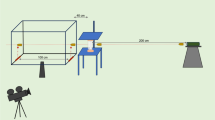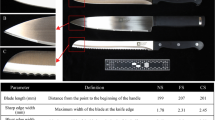Abstract
In literature, many studies have been performed in order to investigate the presence of GSR (“gunshot residue”) and metallic residues in general with radiological techniques on several types of material, but the survival of metallic residues on charred samples has never been systematically performed. In this study, 31 adult bovine ribs underwent a shooting test. Every rib was shot with a single bullet, at a near-contact shooting distance, using two kinds of projectile: 17 samples were shot with a full metal-jacketed bullet and the remaining 14 with an unjacketed bullet. After the shooting test, every rib underwent a “charring cycle” in an electric oven up to 800°C. Every sample underwent radiological investigation with conventional radiography, before and after the burning process, to evaluate any changes in number and distribution of metallic residues. Radiographs showed survival of radiopaque residues in every sample, even after the charring process, especially when the bullet used was of the unjacketed type.






Similar content being viewed by others
References
Bohnert M, Rost T, Pollak S (1998) The degree of destruction of human bodies in relation to the duration of the fire. Forensic Sci Int 95(1):11–21
Grévin G, Bailet P, Quatrehomme G, Ollier A (1998) Anatomical reconstruction of fragments of burned human bones: a necessary means for forensic identification. Forensic Sci Int 96(2–3):129–134
Hermann NP, Bennet JL (1999) The differentiation of traumatic and heat-related fractures in burned bone. J Forensic Sci 44(3):461–469
DeHaan JD, Nurbakhsh S (2001) Sustained combustion of an animal carcass an its implications for the consumption of human bodies in fires. J Forensic Sci 46(5):1076–1081
Christensen AM (2002) Experiments in the combustibility of the human body. J Forensic Sci 47(3):466–470
Hausmann R, Betz P (2002) Thermally induced entrance wound-like defect of the skull. Forensic Sci Int 128(3):159–161
Thompson TJ (2004) Recent advances in the study of burned bone and their implications for forensic anthropology. Forensic Sci Int 146(Suppl1):S203–S205
Thompson TJ (2005) Heat-induced dimensional changes in bone and their consequences for forensic anthropology. J Forensic Sci 50(5):1008–1015
Ubelaker DH (2009) The forensic evaluation of burned skeletal remains: a synthesis. Forensic Sci Int 183(1–3):1–5
Saverio Romolo F, Margot P (2001) Identification of gunshot residue: a critical review. Forensic Sci Int 119(5):195–211
Lantz PE, Jerome WG, Jaworski JA (1994) Radiopaque deposits surrounding a contact small-caliber gunshot wound. Am J Forensic Med Pathol 15(1):10–13
Brogdon BG (1998) Forensic radiology. CRC Press, Boca Raton
Stein KM, Bahner ML, Merkel J et al (2000) Detection of gunshot residue in routine CTs. Int J Legal Med 114:15–18
Oehmichen M, Gehl HB, Meissner C et al (2003) Forensic pathological aspects of postmortem imaging of gunshot injury to the head: documentation and biometric data. Acta Neuropathol 105(6):570–580
Thali MJ, Yen K, Vock P et al (2003) Image-guided virtual autopsy findings of gunshot victims performed with multi-slice computed tomography (MSCT) and magnetic resonance imaging (MRI) and subsequent correlation between radiology and autopsy findings. Forensic Sci Int 138(1–3):8–16
Harcke HT, Levy AD, Abbott RM et al (2007) Autopsy radiography: digital radiographs (DR) vs multidetector computed tomography (MDCT) in high-velocity gunshot-wound victims. Am J Forensic Med Pathol 28(1):13–19
Andenmatten MA, Thali MJ, Kneubuehl BP et al (2008) Gunshot injuries detected by post-mortem multislice computed tomography (MSCT): a feasibility study. Legal Med 10(6):287–292
Jeffery AJ, Rutty GN, Robinson C, Morgan B (2008) Computed tomography of projectile injuries. Clin Radiol 63(10):1160–1166
Leth PM (2009) Computerized tomography used as a routine procedure at postmortem investigations. Am J Forensic Med Pathol 30(3):219–222
Sen P, Panigrahi N, Rao MS et al (1982) Application of proton-induced X-ray emission technique to gunshot residue analyses. J Forensic Sci 27(2):330–339
Fishbeck HJ, Ryan SR, Snow CC (1986) Detection of bullet residue in bone using proton-induced X-ray emission (PIXE) analysis. J Forensic Sci 31(1):79–85
Warren MW, Falsetti AB, Kravchenko II et al (2002) Elemental analysis of bone: proton-induced X-ray emission testing in forensic cases. Forensic Sci Int 125(1):37–41
Berryman HE, Kutyla A, Russel Davis J 2nd (2010) Detection of gunshot primer residue on bone in an experimental setting—an unexpected finding. J Forensic Sci 55(2):488–491
Wunnapuk K, Durongkadech P, Minami T et al (2007) Differences in the element contents between gunshot entry wounds with full-jacketed bullet and lead bullet. Biol Trace Elem Res 120(1–3):74–81
Iwase H, Yamada Y, Ootani S et al (1998) Evidence for an antemortem injury of a burned head dissected from a burned body. Forensic Sci Int 94(1–2):9–14
Thali MJ, Yen K, Plattner T et al (2002) Charred body: virtual autopsy with multi-slice computed tomography and magnetic resonance imaging. J Forensic Sci 47(6):1326–1331
Levy AD, Harcke HT, Getz JM et al (2009) Multidetector computed tomography findings in deaths with severe burns. Am J Forensic Med Pathol 30(2):137–141
Dedouit F, Telmon N, Costagliola R et al (2007) Virtual anthropology and forensic identification: report of one case. Forensic Sci Int 173(2–3):182–187
O'Donnell C, Iino M, Mansharan K et al (2011) Contribution of postmortem multidetector CT scanning to identification of the deceased in a mass disaster: experience gained from the 2009 Victorian bushfires. Forensic Sci Int 205(1–3):15–28
Dolinak D, Wise SH, Jones C (2008) Microscopic and spectroscopic features of gunpowder and its documentation in gunshot wounds in charred bodies. Am J Forensic Med Pathol 29(4):312–319
Thali MJ, Schweitzer W, Yen K et al (2003) New horizons in forensic radiology: the 60-second digital autopsy-full-body examination of a gunshot victim by multislice computed tomography. Am J Forensic Med Pathol 24(1):22–27
Thali MJ, Kneubuehl BP, Vock P et al (2002) High-speed documented experimental gunshot to a skull-brain model and radiologic virtual autopsy. Am J Forensic Med Pathol 23(3):223–228
Levy AD, Abbott RM, Mallak CT et al (2006) Virtual autopsy: preliminary experience in high-velocity gunshot wound victims. Radiology 240(2):522–528
Puentes K, Taveira F, Madureira AJ et al (2009) Three-dimensional reconstitution of bullet trajectory in gunshot wounds: a case report. J Forensic Leg Med 16(7):407–410
Hess U, Harms J, Schneider A et al (2000) Assessment of gunshot bullet injuries with the use of magnetic resonance imaging. J Trauma 49(4):704–709
Cecchetto G, Giraudo C, Amagliani A et al (2011) Estimation of the firing distance through micro-CT analysis of gunshot wounds. Int J Legal Med 125(2):245–251
Acknowledgments
We thank Mr Giancarlo Scarpa and the staff of the firing ground of Pavia for their collaboration during the experiment and the butchery of Parma for the bovine ribs.
Author information
Authors and Affiliations
Corresponding author
Rights and permissions
About this article
Cite this article
Amadasi, A., Borgonovo, S., Brandone, A. et al. The survival of metallic residues from gunshot wounds in cremated bone: a radiological study. Int J Legal Med 126, 363–369 (2012). https://doi.org/10.1007/s00414-011-0633-y
Received:
Accepted:
Published:
Issue Date:
DOI: https://doi.org/10.1007/s00414-011-0633-y




